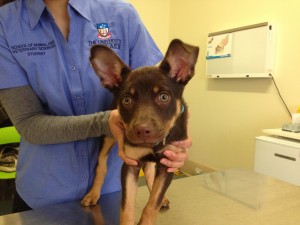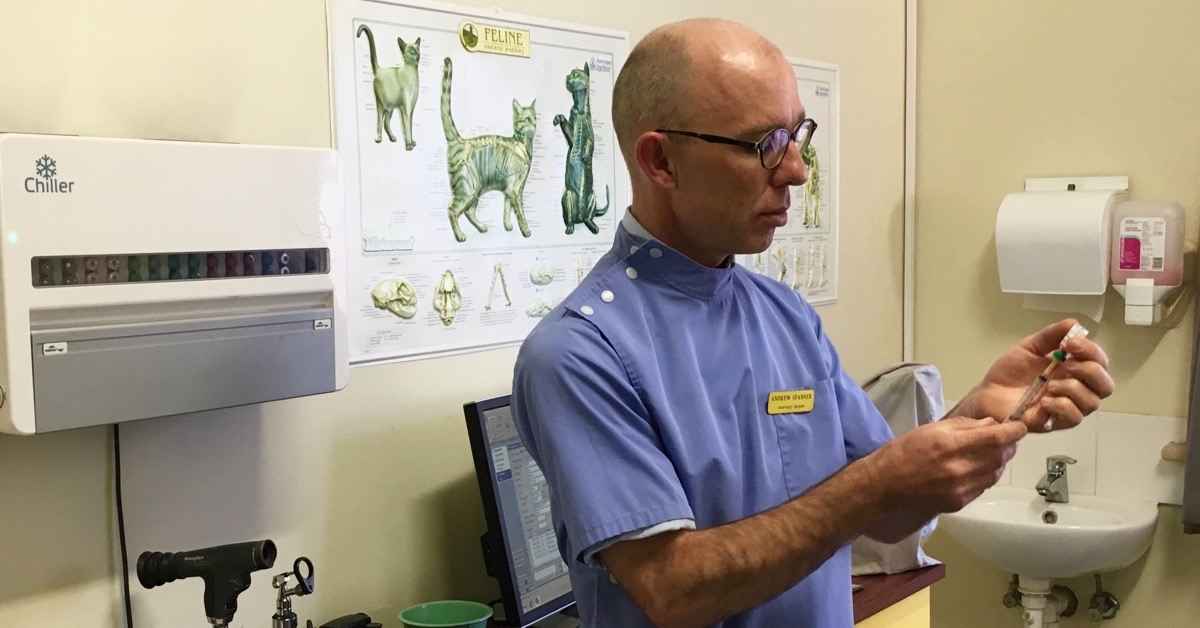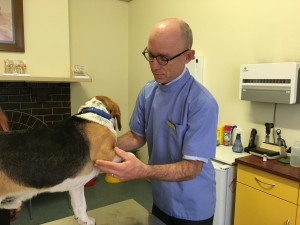Updated November 29, 2020
- Two weeks ago I told you about the diseases of dogs and diseases of cats that we use vaccines to prevent.
- Last week I covered vaccine reactions, vaccinating safely and alternatives to vaccination like titre testing.
- In this third week I’ll tell you about the changes to vaccination schedules for your pet.
- In the final post I’ll you which vaccinations pets need every year

This adorable kelpie cross came to me last week for his ten week puppy vaccination. Most of you already know that we can give a final puppy vaccine at 10 weeks of age which allows puppies to go out at 11 weeks of age.
The problem was, when I looked at his file, he was 9 weeks and 6 days old: one day early.
What’s the problem? It’s only one day early!
I really want you to know the answer; I promise it will be worth it. Once you understand, you’ll know how vaccines work and how they are developed and tested for your pet.
Maternally Derived Antibody is a natural system developed in animals to provide early protection. In the first day of life, the mother’s milk contains high levels of antibodies, and the new puppy or kitten has the ability for these to pass straight from the gut to the bloodstream.
We call this Passive Immunity and it’s essential for animals to survive their first few weeks.
The problem is that it interferes with vaccination. That’s why we can’t give vaccines early even if we want to.
Different vaccines have different abilities to overcome passive immunity, and that’s why you hear all sorts of recommendations for when your puppy or kitten should get their shots.
The thing is though, nothing in nature is predictable. The loss of maternal ability will follow a pattern like I’ve pictured here. Using puppies as an example, some (red arrow) lose protection early, and some (green arrow) late.
BUT we have to protect 100% of the puppies we see. If we knew when the MDA wore off we’d do it at the earliest possible for each puppy.
Since we don’t, we have to choose an age when we can say all puppies will develop protective immunity after vaccination. That’s at the time of the green arrow.
For our vaccine that’s 10 weeks of age. The problem is, we only know this because the manufacturer has tested the vaccine in exactly this way.
They never tested the vaccine at every age, and we have no way of knowing if 100% are still protected at 9 weeks and 6 days.
That’s why:
- The dates are very strict
- We can be just as happy if the puppy is older than 10 weeks, just not any younger.
- We’re so nervous about puppies going out before their final vaccination. For the final vaccine to ‘take’, there always has to be a gap where the puppy has lost their immunity, and in some pups it can be up to four weeks.
The same is true for cats.
Now let’s look at adult dogs and cats. Once again, immunity will wear off at some time, and the graph will look much the same. Once again, our job is that no animal is left unprotected, so we have to give the booster at a time when no dog or cat has yet lost immunity.
That’s the red arrow. As you can see, most pets will lose the immunity much later. The problem is, if we try to predict this, some animals will be at risk, and the consequences could be terrible.
As I said last week, we have no reliable way of detecting which cats and dogs have lost their immunity.
The vaccine schedules we use are designed to make the time between vaccinations as long as possible without any animals being put at risk.
Our vaccine schedules are therefore quite complicated. You’ll find the complete guidelines for Walkerville Vet at Vaccination Explained page. There’s a quick summary for adult animals at the end of this article.
What else is done to make vaccines work?
- Development and testing: All vaccines in order to achieve registration for legal use in Australia are required to have their safety and efficacy proven in clinical trials. Once in use, any adverse effects or vaccine failures are reported to the same registering body, who can revoke licensing if necessary.
- Correct storage: Have you heard of the ‘cold chain’? This refers to the correct transportation and storage of vaccines to ensure they remain effective. We use a local supplier to ensure rapid transit times and have specialised vaccine chillers to hold them at the correct temperature. Thats one on the wall behind me.
- Choosing the right patient: Last week (and above) I talked about when we do not vaccinate your pet. This is important both for their health and for the vaccine to work properly.
- Correct use: We have correct handling and administration guidelines which I’m always happy to explain as I do it.
Have something to add? Comments (if open) will appear within 24 hours.
By Andrew Spanner BVSc(Hons) MVetStud, a vet in Adelaide, Australia. Meet his team here.




